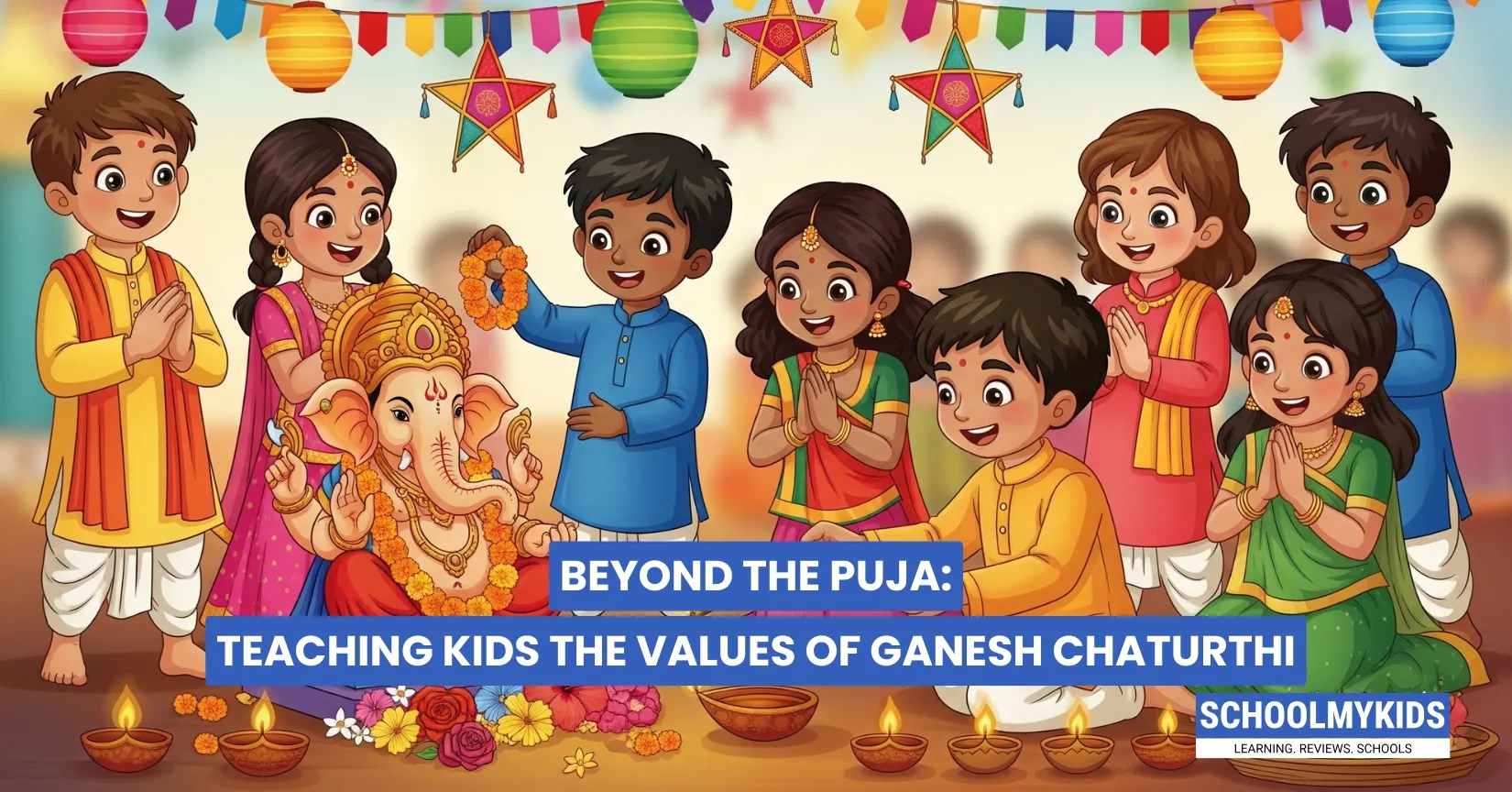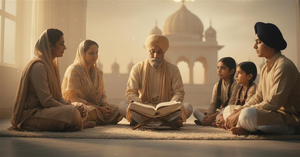When we see our little ones eagerly waiting for Bappa to come home, their eyes lighting up at the sight of modaks, and their tiny hands folded in prayer, we know Ganesh Chaturthi is much more than just a festival for them. It's pure magic. But what if we told you this magic holds the secret to raising children with strong values that will guide them throughout their lives?
Let us explore how we can go beyond the rituals and help our children learn life lessons from our beloved Ganesha that they'll carry in their hearts forever.
The Art of Smart Thinking
Remember the story where Ganesha circled his parents while his brother flew around the world? When your child faces a problem at school or can't reach something high, remind them of this story. "Sometimes the smartest solution isn't the most obvious one. Think like Ganesha did."
This teaches our children that being smart isn't about having all the resources; it's about using what you have in the best way possible.
Big Ears, Big Heart: The Power of Listening
Look at Ganesha's beautiful, big ears. Every time your child interrupts you or their grandparents, gently touch their ears and say, "Ganesha has big ears because listening makes us wise. What do you think Nani was trying to tell you?"
Make it a game. During family dinners, have "Ganesha listening time" where everyone gets to speak while others just listen - no interrupting allowed. Watch how your child starts picking up valuable lessons from everyday conversations with relatives and friends.
When children truly listen, they learn empathy. They understand that everyone has something valuable to share, just like how Ganesha listens to all our prayers, big and small.
The Flexible Trunk: Bending Without Breaking
Show your child how Ganesha's trunk can pick up the tiniest flower and also move heavy obstacles. "See, sometimes we need to be gentle, like when we help a friend who's crying, and sometimes we need to be strong, like when we stand up for what's right."
When your child gets upset because plans change, such as a picnic getting canceled due to rain, remind them of Ganesha's flexible trunk. "We can be sad for a moment, but then we adapt. What else can we do today that might be just as fun?"
This helps children understand that life will always have surprises, and our happiness depends on how well we can adjust without losing our joy.
Small Eyes, Big Focus
Despite his large size, Ganesha has small, focused eyes. This is perfect for our world of distractions. When your child is struggling with homework or keeps getting distracted while playing, sit with them and say, "Let's focus like Ganesha. Small eyes, but they see everything that matters."
Create "Ganesha focus time" at home, maybe 15 minutes where phones are away, and everyone does one thing completely. Whether it's homework, drawing, or even eating, show them that giving full attention makes everything more enjoyable and meaningful.
The Mouse and the Elephant: True Humility
The most beautiful lesson comes from seeing mighty Ganesha riding a tiny mouse. Share this with your child: "Even though Ganesha is so powerful, he treats the smallest mouse with love and respect. How do you think we should treat the new student in your class who seems shy?"
When your child achieves something like winning a competition, getting good grades, or mastering a new skill, remind them of Ganesha and his mouse. "Being good at something means we have more responsibility to be kind to others, not to show off."
This creates children who lead with compassion rather than ego.
The Sweet Tooth with Self-Control
Yes, Ganesha loves modaks, but notice how he never appears greedy or impatient. Use this during everyday situations: "Ganesha enjoys his favorite sweet, but he also knows when enough is enough. Should we save some cookies for later?"
This isn't about depriving children of joy, but teaching them that true happiness comes from balance and gratitude, not from always wanting more.
Bringing It All Together in Daily Life
Make these teachings part of your daily routine:
- Morning Prayer Time: Instead of just reciting, ask your child, "What would you like Ganesha to help you with today? Listening better to your teacher? Being kind to someone who was mean yesterday?"
- Problem-Solving Moments: When conflicts arise between siblings or friends, ask, "What would Ganesha do? How would he use his wisdom to solve this?"
- Bedtime Reflections: "Today, when did you act like Ganesha? When did you listen with big ears? When were you humble like him with his little mouse?"
The Most Important Teaching
Above all, teach your children that Ganesha's greatest quality was his love and respect for his parents. In our busy lives, this message is precious. When your child helps you with household work, appreciates a meal you've cooked, or simply says "thank you," acknowledge it: "This makes me think of how Ganesha honored his parents. You make me so proud."
This creates a foundation of gratitude and respect that extends to teachers, elders, and society.
Your Role as a Parent
Remember, children learn more from watching us than from our words. When they see you listening patiently to their grandfather's repeated stories, adapting cheerfully when plans change, or treating the house help with respect, they're learning Ganesha's values without even realizing it.
The beautiful thing about these teachings is that they're not complex moral lectures. They're simple, everyday choices that shape character. Every time your child chooses kindness over rudeness, patience over impatience, or humility over pride, they're embodying the spirit of Ganesha.
Conclusion
As we prepare for this Ganesh Chaturthi, let's make a promise. Yes, we'll make beautiful rangoli, prepare delicious modaks, and sing devotional songs. But more importantly, we'll help our children see that Bappa's greatest gift isn't the fulfillment of wishes; it's the wisdom to live a life filled with love, respect, and joy.
Because when our children carry these values in their hearts, they carry Ganesha with them wherever they go. And that is the most precious blessing we can give them.








Be the first one to comment on this story.